
The facade of the archaic temple of Hera Ancient Olympia Digital Reconstruction Ancient
Greek Architecture is concerned with simplicity, proportion, perspective, and harmony in buildings. Greek architecture includes some of the finest and most distinctive buildings ever built. Examples of Greek architecture include temples, theatres, and stadia, all of which become common features of towns and cities from antiquity onwards.. Greek architects would go on to greatly influence.

Gallery of AD Classics The Parthenon / Ictinus and Callicrates 8
Temple. The most recognizably "Greek" structure is the temple (even though the architecture of Greek temples is actually quite diverse). The Greeks referred to temples with the term ὁ ναός (ho naós), meaning "dwelling," temple derives from the Latin term, templum.The earliest shrines were built to honor divinities and were made from materials such as wood and mud brick.

Ancient Greek Temple Facade Against Clear Blue Sky Stock Image Image of facade, blue 61446513
The one classic Greek structure that immediately leaps to the modern mind is the Greek temple, the spectacularly beautiful structure standing whitely and alone on a hill, and temples came in architectural shapes that changed over time (Doric, Ionic, Corinthian styles). But temples weren't the only inspiring buildings in Greek cities.
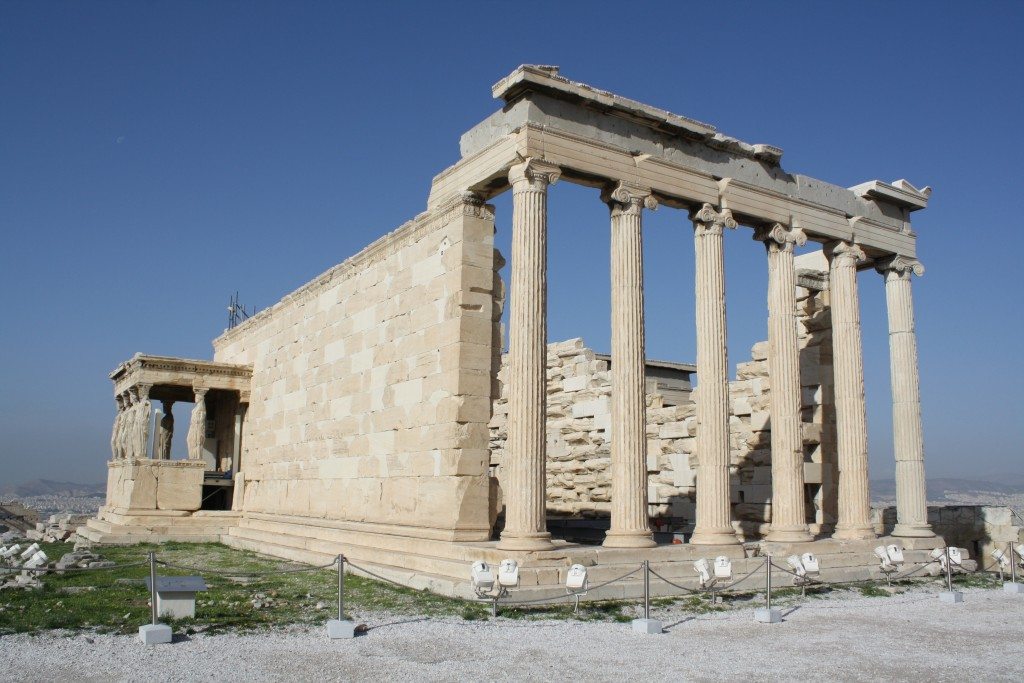
Best views of the Erechtheion in Athens
Greek architecture refers to the architecture of the Greek-speaking peoples who inhabited the Greek mainland and the Peloponnese, the islands of the Aegean Sea, the Greek colonies in Ionia (coastal Asia Minor), and Magna Graecia (Greek colonies in Italy and Sicily).

A reconstruction of the temple of Aphaia Greek temple, Temple, Greek
In its heyday, the Parthenon featured a Doric facade and Ionic frieze interior, while the Doric Propylaea—the gateway to the Acropolis and an art gallery in the Classical era—lacked friezes and pedimental sculptures.. The Erechtheion (421-406 BCE), designed by Mnesicles, is an ancient Greek temple on the north side of the Acropolis.

Jacques Ignace Hittorff (17921867) / Reconstruction of the Temple of Empedocles at Selinunte
Ancient Greek temples were Greek structures which were built to house statues of gods and goddesses representing the deities of ancient Greek religion. They were also used to store.

Temple of Olympian Zeus Parthenon, Acropolis, Greece Culture, Balkan Peninsula, Corinthian
a) Porches: Shallow prostyle porches, with six columns, at either end of the cella replaced the deep pronaos and opisthodomos. b) Cella: The cella's width was determined by the dimensions of the facade. Because of the increased number of columns, the cella was wider. For the first time, a Greek architect attempted to design interior space.

Top 5 Ancient Greek Temples to Explore in Greece EF Go Ahead Tours
There were three main architectural styles (so-called orders of Greek architecture) in ancient Greece: Doric, Ionic, and Corinthian. The names of the orders are derived from the Greek regions where they were most commonly employed. The Doric order was the predominant style until the Fifth Century BCE, when the Ionic order first made its appearance.
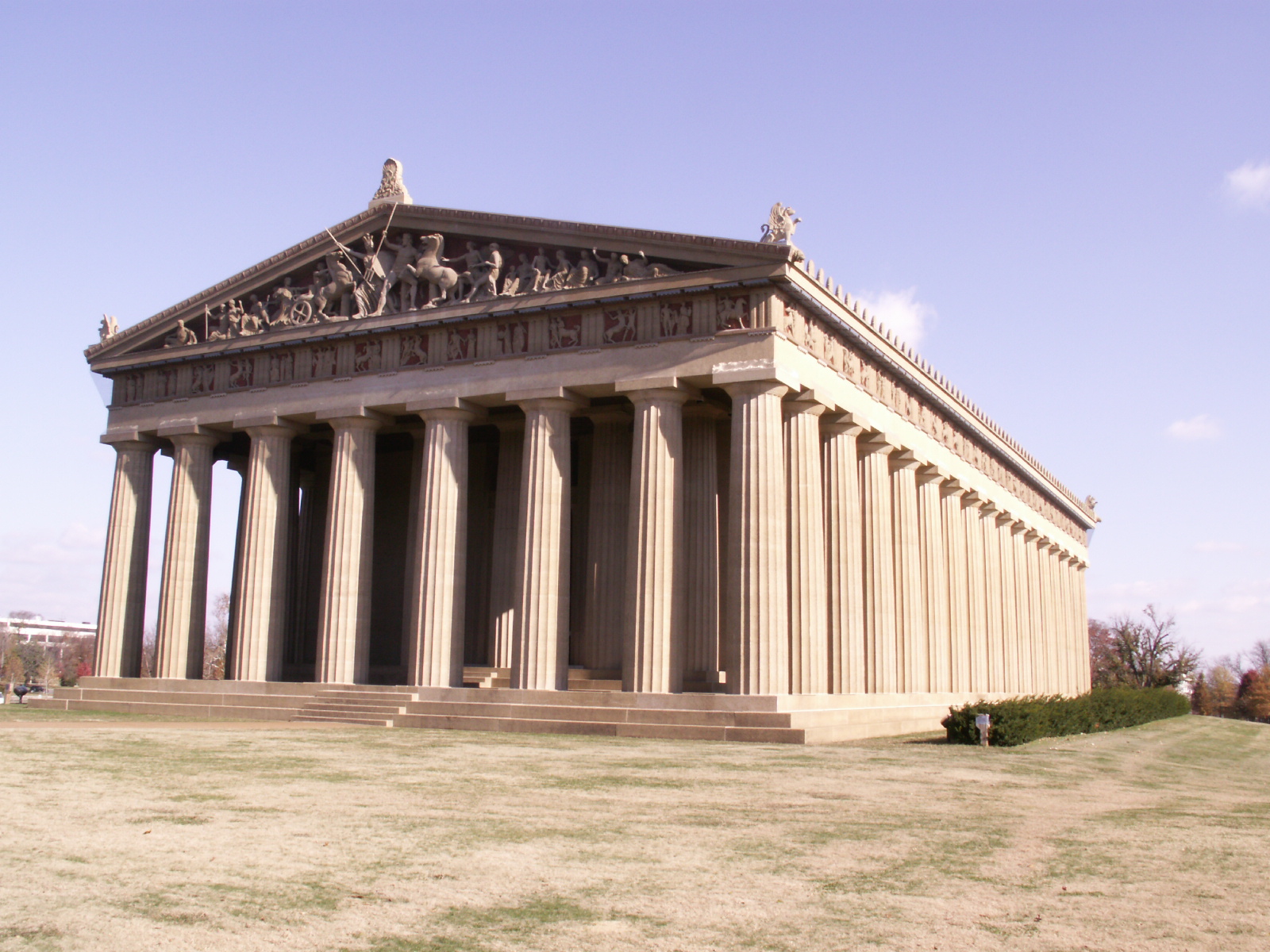
12 Stunning Historical Facts about The Parthenon DailyForest Page 8
The basic elements of a Greek temple included: Cella - this was the central room of the temple. It had no windows, and it was where the cult statue would have been located. It is also called the naos.

The facade of the Parthenon, Athens, Greece, drawing, Greek... News Photo Getty Images
The Doric order emerged on the Greek mainland during the course of the late seventh century B.C.E. and remained the predominant order for Greek temple construction through the early fifth century B.C.E., although notable buildings of the Classical period—especially the canonical Parthenon in Athens—still employ it. By 575 B.C.E the order may be properly identified, with some of the.

Fachada del templo dórico de Hefesto en Ágora Antigua Atenas, Grecia Europa 2022
Greek temples ( Ancient Greek: ναός, romanized : naós, lit. 'dwelling', semantically distinct from Latin templum, "temple") were structures built to house deity statues within Greek sanctuaries in ancient Greek religion.
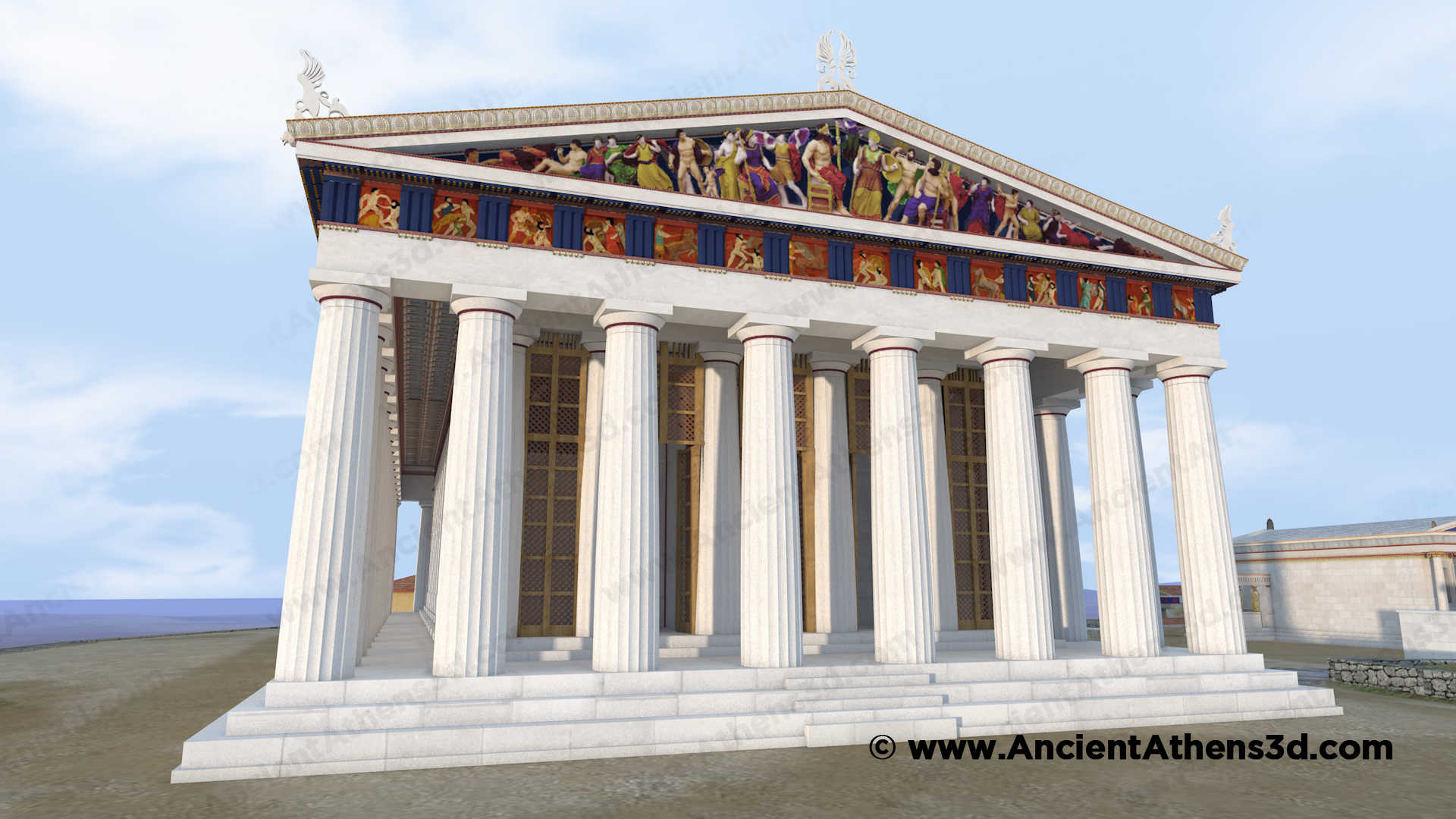
The Parthenon Ancient Athens 3D
The Parthenon ( / ˈpɑːrθəˌnɒn, - nən /; Ancient Greek: Παρθενών, romanized : Parthenōn [par.tʰe.nɔ̌ːn]; Greek: Παρθενώνας, romanized : Parthenónas [parθeˈnonas]) is a former temple [6] [7] on the Athenian Acropolis, Greece, that was dedicated to the goddess Athena during the fifth century BC.

Facade of the Doric Temple of Hephaestus in Ancient Agora, Athens, Greece Stock Image Image of
Pediment, in architecture, triangular gable forming the end of the roof slope over a portico (the area, with a roof supported by columns, leading to the entrance of a building); or a similar form used decoratively over a doorway or window. The pediment was the crowning feature of the Greek temple

Greek temple facade Ancient Greece Architecture Temples, Ancient Chinese Architecture, Indian
The Acropolis Athens: Parthenon The Parthenon, on the Acropolis, Athens. The Parthenon was part of a magnificent rebuilding program directed by the Athenian statesman Pericles, following the sack of the Acropolis during the Greco-Persian Wars (492-449 bce ).
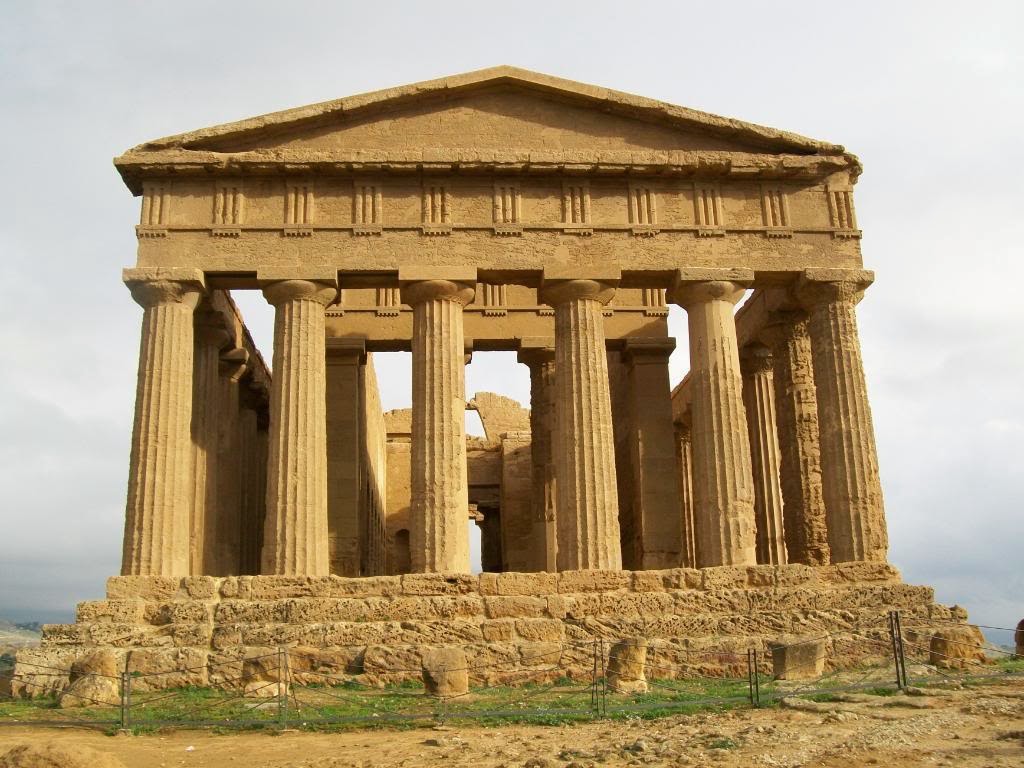
Culture Holiday Tour Ancient Temples in Greece
The temple, in Doric style, was constructed between 440 and 430 BCE and had 6 columns on the facade and 13 along the sides. It is one of the best preserved Greek style temples in the Mediterranean. Temple of Poseidon, Sounion. Temple of Poseidon (444-440 BCE), Sounion, Greece. With 6 columns on the façades and 13 on the long sides, each has.
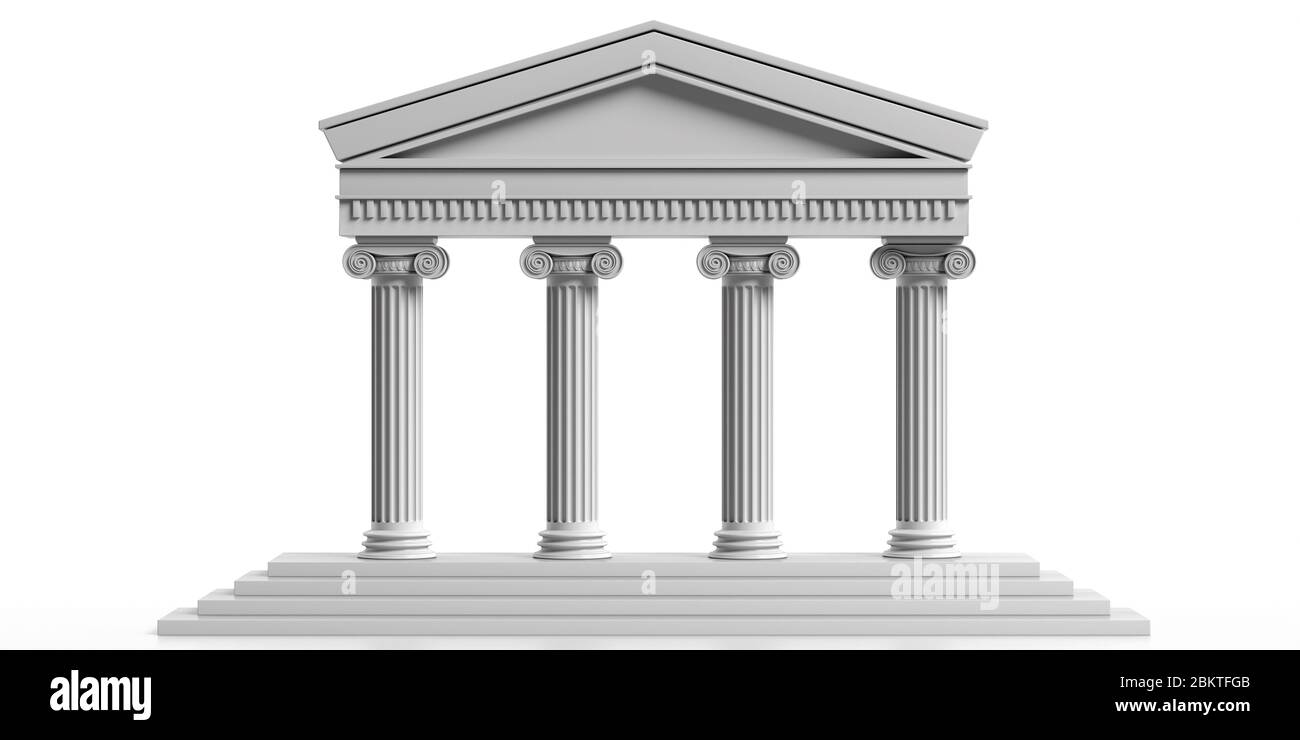
Ancient greek temple facade with four marble columns, pediment and stairs isolated on white
The temple, in Doric style, was constructed between 440 and 430 BCE and had 6 columns on the facade and 13 along the sides. It is one of the best preserved Greek style temples in the Mediterranean .